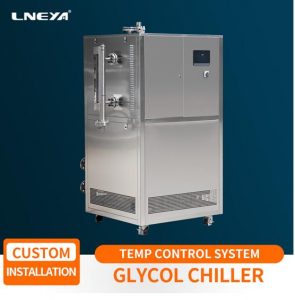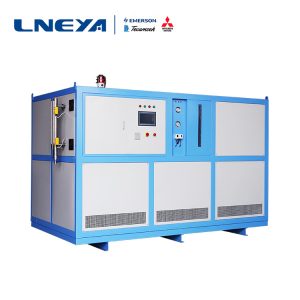Condições específicas do ensaio a alta e baixa temperatura da bateria do VE (veículo elétrico)
There are mainly 2 types of vehicles:
1. Battery for pure electric vehicle
2. Fuel cell, dedicated to fuel cell electric vehicles
Thermal test: This test is performed to characterize the reaction of cells to the high-temperature environment.
a) Adjust the SOC of battery to 100% of BEV application and 80% of HEV application.
b) Batteries stabilized at room temperature shall be placed in a gravity or circulating air convection oven. The oven temperature shall be raised to 130 ℃ ± 2K at the speed of 5K/min. The battery shall be held at this temperature for 30 minutes before stopping the test.
Teste de ciclo de temperatura:
This test is conducted to characterize the thermal durability of the battery by alternately exposing it to low and high temperatures to cause expansion and contraction of the battery components.
a) Adjust the SOC of battery to 100% of BEV application and 80% of HEV application.
b) Conduct temperature cycling according to ISO 16750-4. As shown in Table 4, the ultra-low operating temperature shall be – 40 ℃ or Tmin specified by the battery manufacturer, and the maximum operating temperature shall be 85 ℃ or Tmax specified by the battery manufacturer. Perform 30 test cycles as specified.
The battery shall be heated in a gravity convection or circulating air oven with an initial temperature of 20 ± 5 ° C (68 ± 9 ° F). The temperature of the oven is raised to 130 ± 2 ℃ (266 ± 3.6 ℉) at the rate of 5 ± 2 ℃ (9 ± 3.6 ℉) per minute and maintained for 10 minutes. The sample shall be returned to room temperature (20 ± 5 ℃) and then checked. For batteries with a set temperature higher than 100 ℃ (212 ℉), the regulating temperature shall be increased from 130 ± 2 ℃ (266 ± 3.6 ℉) to 30 ± 2 ℃ (86 ± 3.6 ℉) from the manufacturer’s maximum specified temperature. For lithium metal chemical battery, the regulating temperature shall be increased to 170 ± 2 ℃ (338 ± 3.6 ℉) at most.
The above contents are excerpts from the network. Please contact us if you have any questions.
Recomendações relacionadas
-
What is a laboratory glycol chiller What should I pay attention to
1211The laboratory glycol chiller is a commoncooling equipment in the laboratory. It is generally used to achieve thetemperature requirement of the cold source. What are the benefits?1. Why choose a laboratory glycol chiller:The single-machine self-...
Ver pormenores -
Descrição do disparo do frigorífico de alta potência
930O frigorífico de alta potência Wuxi Guanya LNEYA está equipado com acessórios de marca. O desempenho de refrigeração de todo o frigorífico de alta potência é relativamente estável. Uma vez que a viagem de energia ocorre, ele precisa ser processado no tempo para evitar afetar a operação.
Ver pormenores -
High and low temperature circulation tank daily use instructions
1414During the operation of the high and low temperature circulation tank, some phenomena generated by the LNEYA protection device need to be observed. If some improper sounds and unexpected situations occur, we need to solve it in time. The high and ...
Ver pormenores -
Collocation Requirements For Lab Water Chiller
1181The lab water chiller is a relatively advanced cryopreservation equipment, which is suitable for blood stations, hospitals, health and epidemic prevention systems, scientific research institutes, electronic industry, chemical medicine, biological ...
Ver pormenores
 LNEYA Refrigeradores industriais Fabricante Fornecedor
LNEYA Refrigeradores industriais Fabricante Fornecedor













